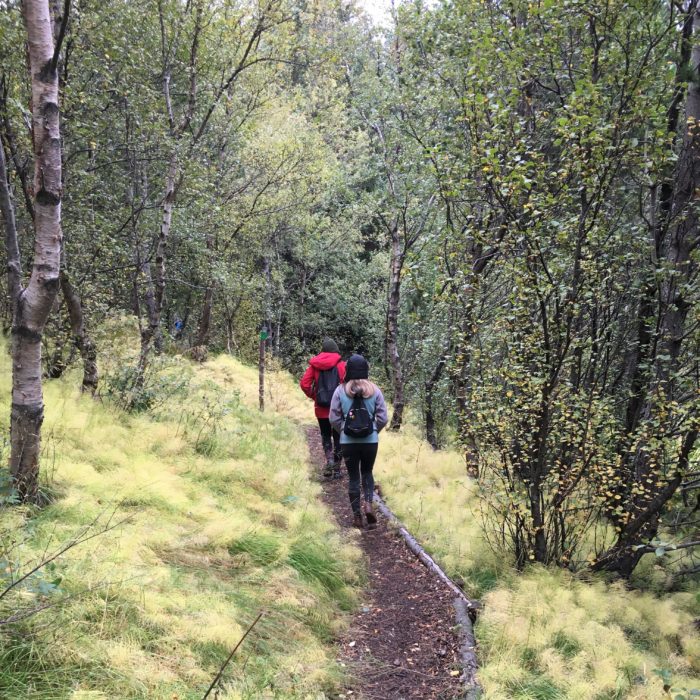When most people think of meditation, they probably imagine a person sitting cross-legged with eyes closed. This was also my impression of it until I began to practice myself and to learn more about it. My first taste of meditation was when I went along with a friend of mine to a meditation gathering, back when I lived in LA. We would do guided meditations together and later talk and share our experiences. For the longest time, I experienced nothing. It was difficult for me to control my thoughts. However, as with anything, I got better with practice and was soon able to get to that blissful state of the present. For me, it is an indescribable feeling, but even though I have experienced this bliss, it is still difficult for me to incorporate this as a regular part of my day.
I think that a lot of people can say the same, and for some the thought of sitting in silence might sound like torture. For these people, there is good news! There are many forms of meditation, you don’t have to be a cross-legged sage to reap the benefits of meditation. Here are five alternative ways of practicing mindfulness, several of which are normal everyday tasks that you probably already do.
1. Running
True runners will attest to the therapeutic effects of going for a nice long, leisurely run. As someone who used to hate running, this used to baffle me. However, the more I ran the better I felt, in both body and mind. Running serves so many functions other than just a cardio workout. If you have a lot on your mind, it can be a way to work things out and come up with ideas or solutions. On the flip side of that, it can be a way of clearing your mind as well.
To make your run more meditative, focus your gaze softly ahead of you, and focus your attention on the sound of your breath and your feet hitting the pavement. Run at a comfortable pace that gets your heart rate up but is not too strenuous.
One breathing technique you can try is to breathe in for three counts and out for two. Breathing in this way will not only give you something to focus on, but it alternates the foot that hits the ground on your exhalation. This is actually important for reducing injury as well.
2. Cooking
There are a lot of tasks in cooking that can be repetitive, such as peeling, chopping or slicing. These seemingly mundane tasks are actually a perfect opportunity to introduce mindfulness into your day. When you begin preparing your food. Wash your hands, close your eyes and clear your mind. Leave all of your worries or concerns from the day outside of your kitchen and focus on your task at hand, preparing food to nourish your body. When you pick up the ingredients, really feel them and notice their smell, shape and texture. When you are finished, you will have not only a refreshed spirit, but a delicious meal.
3. Hiking
It is no accident that most meditation centers, temples and monasteries are tucked away in the forest or perched in the mountains. They have found for years that being in nature allows one to more easily come in to the present. Our modern, everyday life is full of distractions and when we go out into nature, we are able to step away from that. Not only do your surroundings impact your state of mind, but your physical body as well. When you leave the climate controlled atmosphere of your house, your body becomes more aware of the subtle breezes and your ears are more receptive to the sounds of nature. Hiking doesn’t need to be a strenuous uphill mountain trek, it can simply be a nature walk through the park or along a river.
4. Gardening
We’ve mentioned how being outdoors can heighten your sense of awareness and aid you in coming into the present. Now think about physically connecting with the earth to deepen that feeling. Working with the earth through gardening is not only a good hobby, but you can use it as reflection time as well. When you start, take the soil in your hands and imagine your connection to the earth and with all that surrounds you. Give gratitude for the food and the beauty that the earth provides us and channel that into your work.
5. Cleaning
This might seem an odd one to add to the list because it is such a dreaded task for many. Admittedly, it’s not one of my favorites either; vacuuming, dusting, wiping, and scrubbing are rather mundane tasks. However, it is the repetitive motion that can aid in getting into a state of mindfulness. Take a moment before you start to clear your mind and then just focus solely on your task. If you shift the way you look at it, housecleaning might actually become a welcomed responsibility rather than a dreaded task.
Have you found any of these useful as meditation alternatives?
Also by Kathryn: What Every Animal Lover Must Know About Dog Food–& How To Feed Your Pup
Get more like this–sign up for our newsletter for exclusive inspirational content!
__
Photo: Fabian Møller on Unsplash; Peaceful Dumpling






